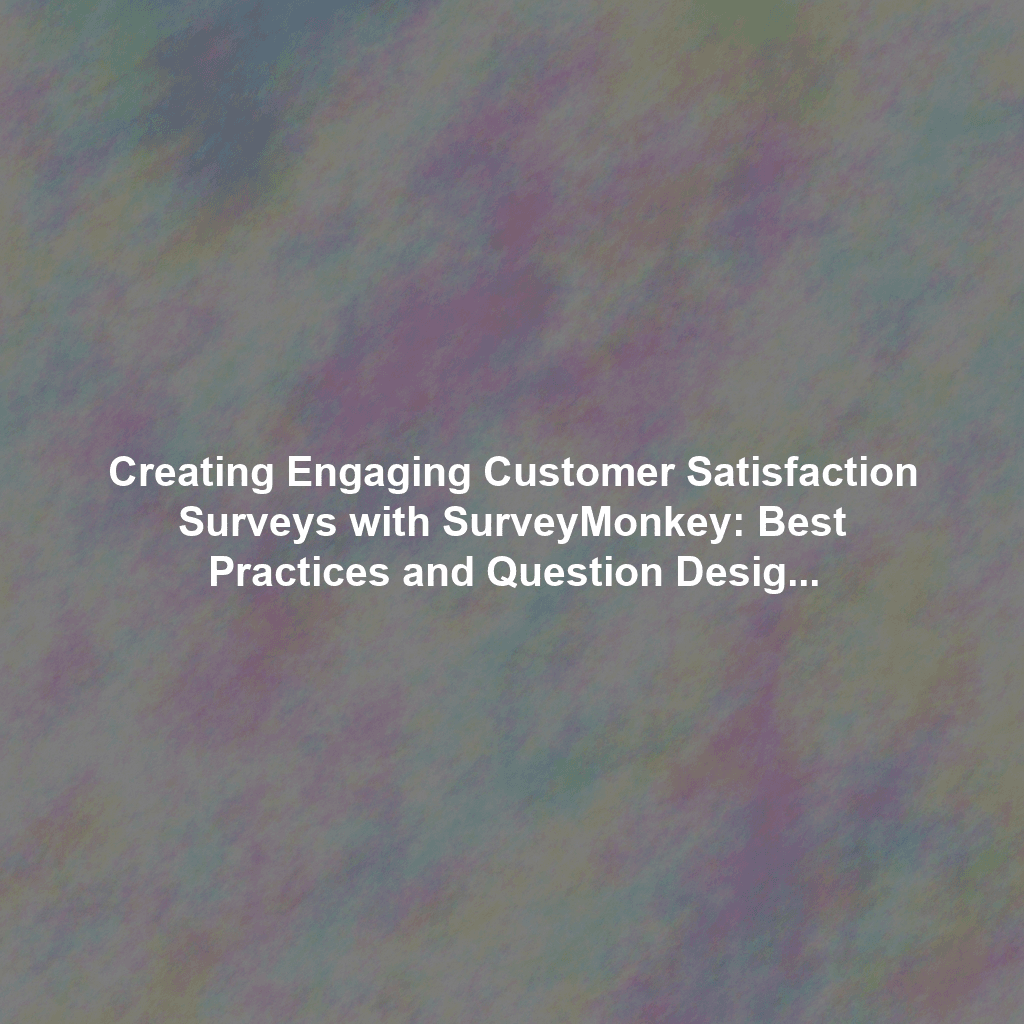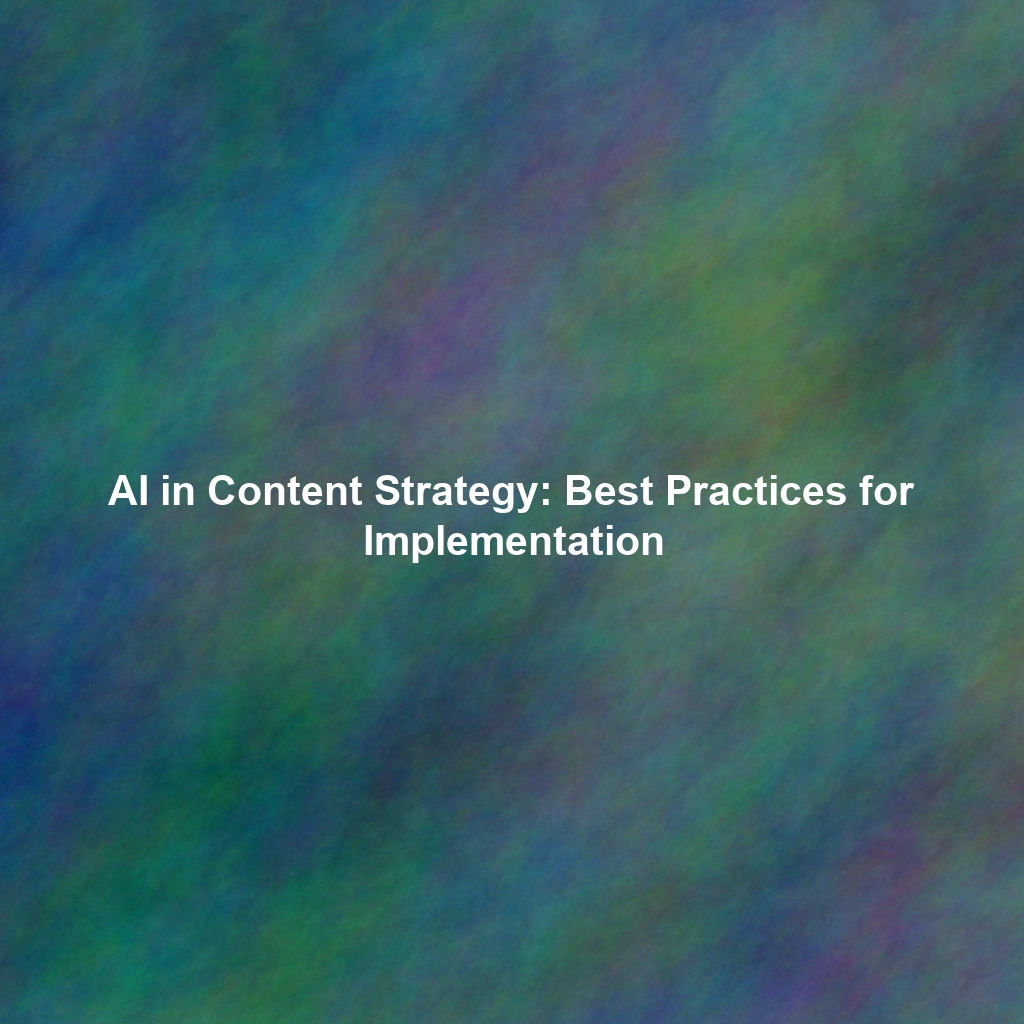Why Customer Satisfaction Surveys are a Strategic Imperative
Customer satisfaction surveys are far more than just a formality or a “nice-to-have.” They provide crucial, actionable data that can directly impact your business’s bottom line and long-term viability. By systematically understanding customer satisfaction levels, you can:
- Identify Critical Areas for Improvement: Pinpoint specific, quantifiable aspects of your products, services, or customer service processes that are underperforming or causing friction. This allows for targeted resource allocation and effective problem-solving.
- Increase Customer Loyalty & Advocacy: Actively soliciting and acting on feedback demonstrates that you genuinely value customer input and are committed to improving their experience. This builds trust, fosters loyalty, and transforms satisfied customers into vocal brand advocates (driving positive word-of-mouth and Net Promoter Score).
- Proactively Reduce Churn: Identify and address customer pain points, frustrations, or emerging dissatisfaction *before* they escalate and lead to customer attrition. Surveys can act as an early warning system, allowing for proactive intervention.
- Enhance Brand Reputation & Perception: Consistently positive customer experiences, driven by responsive feedback loops, translate directly to positive online reviews, stronger brand image, and a reputation for being customer-centric. This contributes directly to your brand’s **E-E-A-T (Experience, Expertise, Authoritativeness, Trustworthiness)**.
- Enable Data-Driven Decision Making: Move beyond assumptions, anecdotes, or gut feelings. Base strategic business decisions (e.g., product roadmaps, service improvements, marketing messaging) on real, quantifiable customer feedback, leading to more effective and impactful outcomes.
- Benchmark Performance: Track satisfaction metrics over time to benchmark your performance against competitors or internal goals, identifying trends and measuring the impact of implemented changes.
The Cost of Unheard Customers
Customers who feel unheard or ignored are far more likely to churn and share negative experiences publicly. A robust survey strategy is an investment in preventing these costly outcomes, transforming potential detractors into loyal customers.
Crafting Effective Survey Questions in SurveyMonkey: The Art & Science of Insight
The quality of your survey questions directly and profoundly impacts the quality and actionability of the feedback you receive. Poorly designed questions lead to ambiguous data and flawed insights. Here are key considerations for meticulously designing effective survey questions within SurveyMonkey:
1. Choosing the Right Question Types for Specific Data Needs
SurveyMonkey offers a versatile array of question types, each suited for different purposes and data collection objectives. Select the most appropriate type for each question to maximize clarity, minimize respondent effort, and ensure high-quality response data:
- Multiple Choice: Ideal for gathering categorical data, preferences, or demographic information (e.g., “Which feature do you use most often?”). Ensure answer options are exhaustive (cover all possibilities) and mutually exclusive (no overlap). Consider adding an “Other (please specify)” option.
- Rating Scales (Likert Scales): Use these to measure levels of agreement, satisfaction, frequency, or importance (e.g., “On a scale of 1 to 5, how satisfied are you with our customer service?”).
- Odd vs. Even Options: Consider using an odd number of options (e.g., 1-5 or 1-7) to allow for a neutral or middle response, or an even number if you want to force a positive or negative leaning.
- Clear Labels: Label all points on the scale (e.g., “Strongly Disagree” to “Strongly Agree”) for clarity.
- Open-Ended Questions (Text Boxes): Invaluable for gathering detailed, qualitative, and nuanced feedback that quantitative questions cannot capture. Use sparingly to avoid survey fatigue. Phrase them carefully to encourage specific and insightful responses (e.g., “What specific improvements could we make to your onboarding experience?”).
- Net Promoter Score (NPS): A powerful, industry-standard metric for gauging customer loyalty and willingness to recommend (e.g., “On a scale of 0 to 10, how likely are you to recommend our company to a friend or colleague?”). SurveyMonkey provides built-in NPS question templates and calculation.
- Matrix/Grid Questions: Efficient for rating multiple items on the same scale (e.g., rating various product features on a satisfaction scale).
- Ranking Questions: Allow respondents to order items by preference or importance (e.g., “Rank the following features by importance to you”).
2. Avoiding Bias in Question Wording: Ensuring Objectivity
Bias in question wording can subtly (or overtly) skew results, leading to inaccurate insights and flawed conclusions. Be meticulously mindful of the following common pitfalls:
- Leading Questions: Avoid questions that subtly suggest a desired answer or make assumptions (e.g., “Don’t you agree that our product is excellent?” or “How much did you enjoy our amazing new feature?”). Rephrase to be neutral: “How would you rate our product?” or “How would you describe your experience with our new feature?”
- Loaded Questions: Avoid questions that contain emotionally charged language or make unsupported assumptions (e.g., “Why are you wasting your money on our competitor’s inferior product?”). These alienate respondents and yield biased data.
- Double-Barreled Questions: Avoid questions that ask about two distinct things at once, making it impossible for respondents to answer accurately (e.g., “How satisfied are you with our product’s price and quality?”). Split them into two separate questions.
- Jargon and Technical Terms: Use clear, concise, and universally understandable language. Avoid industry-specific jargon, acronyms, or highly technical terms that may confuse respondents outside your immediate team.
- Absolute Language: Avoid words like “always,” “never,” “all,” or “none,” as they often force respondents into extreme answers.
- Negative Phrasing: While sometimes necessary, negative phrasing can be confusing. “Which of these features do you *not* use?” can be harder to process than “Which of these features do you use least often?”
3. Optimizing Question Order and Flow: Enhancing the Respondent Experience
The order in which you present questions significantly influences response quality, completion rates, and overall respondent experience. A logical flow reduces cognitive load and survey fatigue:
- Start with Easy, Non-Sensitive Questions: Begin with simple, non-threatening, and easy-to-answer questions (e.g., demographics, general satisfaction) to ease respondents into the survey and build rapport.
- Group Similar Questions Together: Organize questions by topic or theme to improve flow and coherence. This makes the survey feel more logical and less disjointed.
- Utilize Skip Logic & Display Logic: SurveyMonkey’s powerful skip logic feature allows you to direct respondents to different sections of the survey based on their previous answers. This personalizes the experience, ensures respondents only answer relevant questions, and significantly reduces survey length for individual respondents.
- Place Sensitive Questions Later: Position potentially sensitive, personal, or open-ended questions towards the end of the survey, after you’ve built rapport and the respondent is more committed to completing it.
- Maintain Logical Progression: Structure the survey to follow a natural thought process (e.g., general experience, then specific touchpoints, then overall satisfaction, then demographics).
4. Leveraging SurveyMonkey Features for Enhanced Question Design
SurveyMonkey provides several built-in features that can significantly enhance your question design and survey creation process:
- Question Bank & Templates: Access a library of pre-written, expert-certified questions and industry-specific survey templates. This saves time and ensures adherence to best practices.
- A/B Testing (Survey Flow): While not for individual question wording, you can test different versions of your survey (e.g., different introductions, different question orders, or different lengths) to see which performs best in terms of completion rates or response quality.
- Customization Options: Customize the look and feel of your survey (colors, fonts, branding) to match your brand’s visual identity, creating a seamless and professional experience for respondents.
- Progress Bars: Include a progress bar to show respondents how much of the survey they have completed, which can encourage completion.
Optimizing the Survey Experience for Higher Completion Rates
A meticulously designed survey is only effective if people actually complete it. Maximizing completion rates requires optimizing the entire survey experience, from invitation to submission. This impacts the representativeness and reliability of your data.
- Keep it Concise & Focused: Respect respondents’ valuable time. Keep the survey as short as possible, focusing only on the most critical questions needed to achieve your objectives. Eliminate any “nice-to-have” questions. A general rule of thumb is 5-10 minutes maximum for most customer satisfaction surveys.
- Provide Clear & Concise Instructions: Make sure respondents clearly understand the purpose of the survey, how their feedback will be used, and how to answer each question (e.g., “Select all that apply,” “Rate on a scale of 1-5”).
- Ensure Flawless Mobile-Friendliness: A significant portion of respondents will likely take the survey on their smartphones or tablets. Ensure your SurveyMonkey survey is fully responsive, easy to navigate, and quick to load on mobile devices. Test it thoroughly across different mobile browsers and operating systems.
- Craft Compelling Invitations: Your email or in-app invitation is the first touchpoint. Use a clear, concise subject line, explain the purpose and estimated time commitment, and emphasize the value of their feedback.
- Offer Incentives (Optional & Strategic): Consider offering a small, relevant incentive (e.g., a discount code, entry into a drawing, a piece of exclusive content) to encourage participation. However, be mindful of potential bias introduced by incentives, as they can sometimes attract less engaged respondents. Clearly state the incentive upfront.
- Manage Survey Frequency: Avoid over-surveying your customers, which can lead to fatigue and opt-outs. Strategically plan your survey cadence to avoid overwhelming your audience.
- Provide a “Thank You” & Close the Loop: Always express sincere gratitude to respondents for their time and valuable feedback immediately after submission. Ideally, communicate *how* their feedback will be used or what actions will be taken, demonstrating that their input matters.
Analyzing Customer Feedback in SurveyMonkey: Extracting Actionable Intelligence
Once you’ve meticulously collected survey responses, the critical next step is to rigorously analyze the data and extract meaningful, actionable insights. SurveyMonkey provides a robust range of reporting and analytics tools to help you make sense of your data, but human interpretation is key.
- Summary Reports & Dashboards: Get an immediate overview of key findings, including response rates, average scores for rating questions, and distribution of multiple-choice answers. SurveyMonkey’s dashboards provide quick visualizations.
- Individual Response Data: Don’t just look at aggregates. Review individual responses, especially for open-ended questions, to gain a deeper understanding of specific customer experiences, pain points, and suggestions.
- Filtering and Segmentation: Use SurveyMonkey’s filtering capabilities to segment responses based on demographics, customer segments (e.g., new vs. returning, high-value vs. low-value), or other criteria. This helps identify trends and patterns within specific groups (e.g., “Are customers in Region A less satisfied with delivery speed than those in Region B?”).
- Cross-Tabulation: Analyze how responses to one question relate to responses to another (e.g., “Are customers who rated our product 5/5 also more likely to recommend us?”).
- Text Analysis for Open-Ended Responses: For qualitative data from open-ended questions, use SurveyMonkey’s text analysis features (or export to external tools) to identify common themes, keywords, and sentiment. This helps quantify qualitative feedback.
- Data Export & Integration: Export your data to CSV, Excel, SPSS, or other formats for further, more sophisticated analysis in external tools (e.g., statistical software, business intelligence dashboards) or for integration with your CRM/CDP.
- Trend Analysis: Compare current survey results with historical data to identify trends in customer satisfaction over time and measure the impact of improvements.
Turning Feedback into Action: The Closed-Loop System for Continuous Improvement
The ultimate goal of customer satisfaction surveys is not just data collection, but to drive positive, measurable change. The insights you gain from SurveyMonkey must be translated into concrete actions. This requires a “closed-loop” feedback system.
- Prioritize Improvements Based on Impact & Feasibility: Focus on addressing the areas where customers are least satisfied, especially if those areas are critical to the customer journey or business objectives. Prioritize based on potential impact and the feasibility of implementation.
- Implement Concrete Changes & Initiatives: Translate insights into actionable plans. Make specific, measurable changes to your products, services, customer service processes, or marketing strategies based on the feedback. Assign clear ownership and timelines for these changes.
- Communicate & “Close the Loop” with Customers: This is critical for building trust and loyalty. Let customers know that you’ve heard their feedback and are actively taking action to improve their experience. This can be done through email updates, blog posts, social media announcements, or direct follow-up for specific feedback.
- Track Progress & Measure Impact: Continuously monitor customer satisfaction levels (through subsequent surveys) to ensure that your efforts are paying off and that the implemented changes are having the desired positive impact. Track relevant business metrics (e.g., churn rate, repeat purchases, average order value) to quantify the ROI of your improvements.
- Empower Frontline Teams: Share relevant feedback with frontline customer service, sales, and product teams. They are often best positioned to understand and act on customer insights directly.
- Foster a Culture of Customer Centricity: Embed customer feedback into your organizational DNA. Make it a regular topic of discussion in team meetings and strategic planning sessions.
Anecdote: The SaaS Company’s Feature Prioritization
A B2B SaaS company used SurveyMonkey to conduct quarterly customer satisfaction surveys. They consistently received feedback about the complexity of their reporting feature. While the product team had other priorities, the repeated, quantifiable dissatisfaction (low scores on “ease of reporting” questions and numerous open-ended comments) from a critical segment of high-value customers forced a re-evaluation. They prioritized a redesign of the reporting module. After launching the improved feature, subsequent surveys showed a 25% increase in satisfaction with reporting and a 5% increase in overall customer retention. “The surveys gave us the data to make the tough call and invest where it truly mattered to our customers,” their Product VP noted. “It paid off directly in reduced churn.”
Common Pitfalls to Avoid: Ensuring Your Surveys Deliver Actionable Insights
While SurveyMonkey simplifies survey creation, several common pitfalls can undermine your efforts and lead to inaccurate or unactionable insights. Avoid these mistakes:
- Undefined Objectives: Launching a survey without a clear, specific goal. This leads to unfocused questions and irrelevant data.
- Poor Question Design: Using leading, loaded, or double-barreled questions, or jargon. This biases results and frustrates respondents.
- Excessive Length: Making surveys too long. This leads to survey fatigue, high drop-off rates, and rushed, inaccurate responses.
- Ignoring Mobile Experience: Not optimizing surveys for mobile devices, which is where a significant portion of respondents will engage.
- Infrequent Surveying: Only surveying once a year. Customer sentiment changes rapidly; continuous feedback loops are essential.
- Lack of Follow-Up/Action: Collecting data but failing to analyze it or, worse, failing to act on the insights. This signals to customers that their feedback doesn’t matter.
- Biased Sampling: Only surveying a small, unrepresentative segment of your customer base. Ensure your sample is diverse and representative.
- Over-Reliance on Quantitative Data: Neglecting open-ended questions. Qualitative feedback provides crucial context and depth that numbers alone cannot.
- Not Closing the Loop: Failing to communicate back to customers about how their feedback was used or what changes were made.
- Data Overload Without Insight: Collecting vast amounts of data but lacking the analytical capabilities or time to extract meaningful, actionable insights.
The Future of Customer Satisfaction Measurement: Beyond 2025
The landscape of customer satisfaction measurement will continue to evolve rapidly, driven by technological advancements and changing consumer expectations. Brands must anticipate future trends to maintain a competitive edge:
- AI-Powered Sentiment Analysis & Text Analytics: More sophisticated AI will automatically analyze vast volumes of open-ended feedback (from surveys, reviews, social media, call transcripts) to identify themes, sentiment, and emerging issues in real-time, providing deeper, faster insights.
- Predictive Satisfaction & Churn Models: AI will move beyond identifying at-risk customers to proactively predicting satisfaction levels and churn likelihood based on a broader array of behavioral and transactional data, enabling highly targeted, preventative interventions.
- Personalized Survey Experiences: Surveys themselves will become more personalized, with questions dynamically adapting based on a respondent’s profile, past interactions, or previous survey answers, increasing relevance and completion rates.
- Conversational Surveys (Chatbots & Voice): Expect a rise in conversational surveys delivered via chatbots or voice assistants, offering a more natural and engaging way for customers to provide feedback.
- Integration with Customer Data Platforms (CDPs): Deeper integration with CDPs will allow for a truly unified view of the customer, combining survey feedback with behavioral, transactional, and demographic data for richer insights and more precise action.
- Real-Time Feedback Loops: The shift towards real-time feedback mechanisms (e.g., in-app prompts, post-interaction surveys) will accelerate, allowing brands to address issues immediately.
Embracing these emerging technologies and methodologies will be crucial for maintaining a competitive edge and fostering truly customer-centric organizations.
Conclusion: Cultivating Loyalty Through Continuous Customer Insight
Customer satisfaction surveys, when implemented effectively using platforms like SurveyMonkey, are a powerful, strategic tool for understanding, improving, and ultimately transforming the customer experience. By meticulously following best practices for question design, optimizing the survey experience for maximum completion, and actively analyzing and acting on the feedback received, you can cultivate stronger customer relationships, significantly increase loyalty, and drive sustainable business growth.
Remember that gathering feedback is not a one-time event; it is an ongoing, iterative process. Continuous improvement based on deep customer insights is the key to long-term success, ensuring your brand remains relevant, responsive, and truly customer-centric in an ever-evolving market. Embrace the voice of your customer, and let it guide your path to excellence.
 Skip to content
Skip to content

